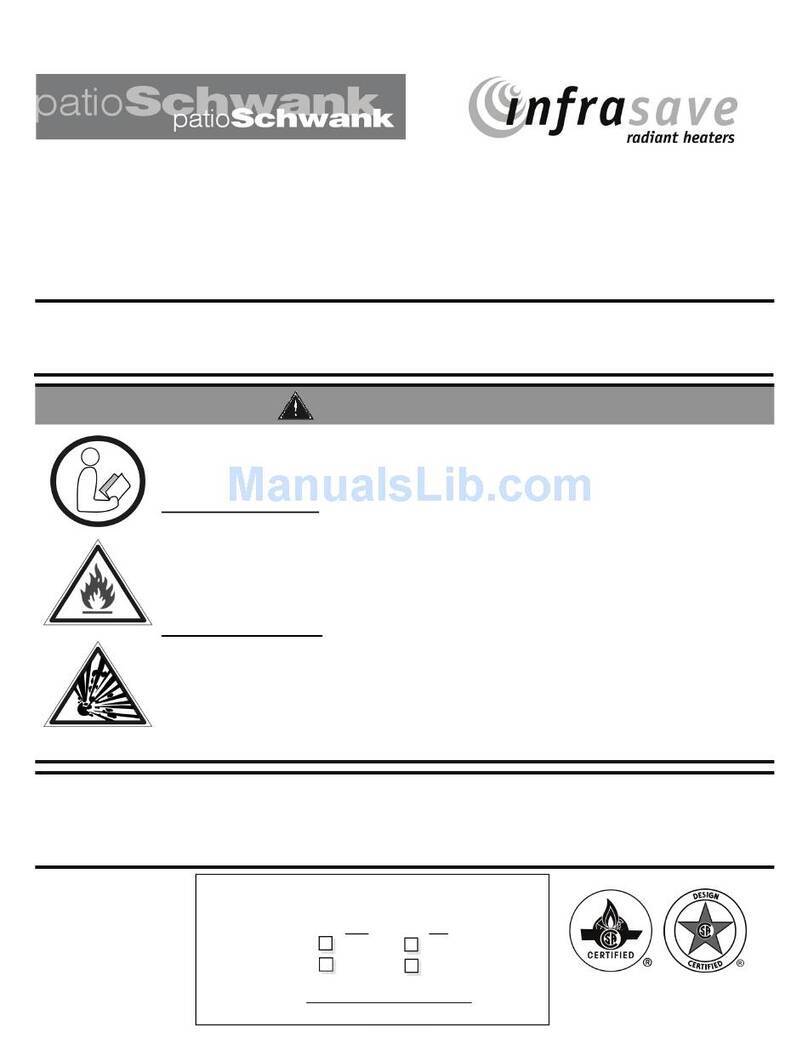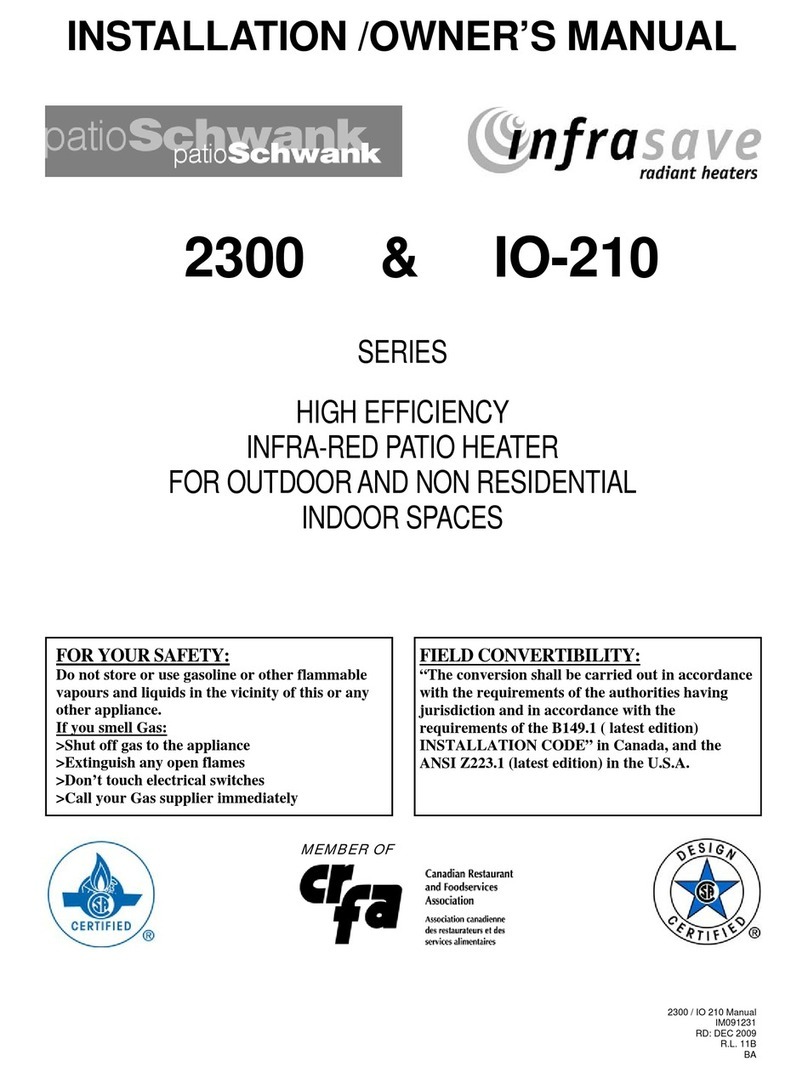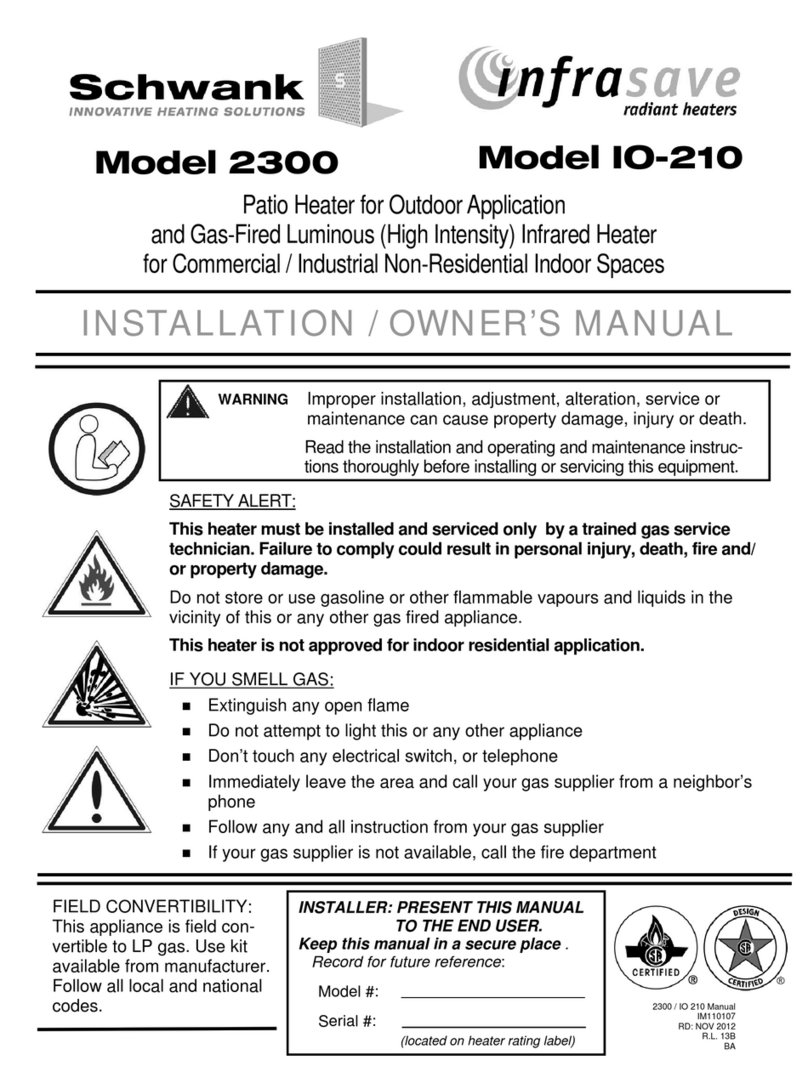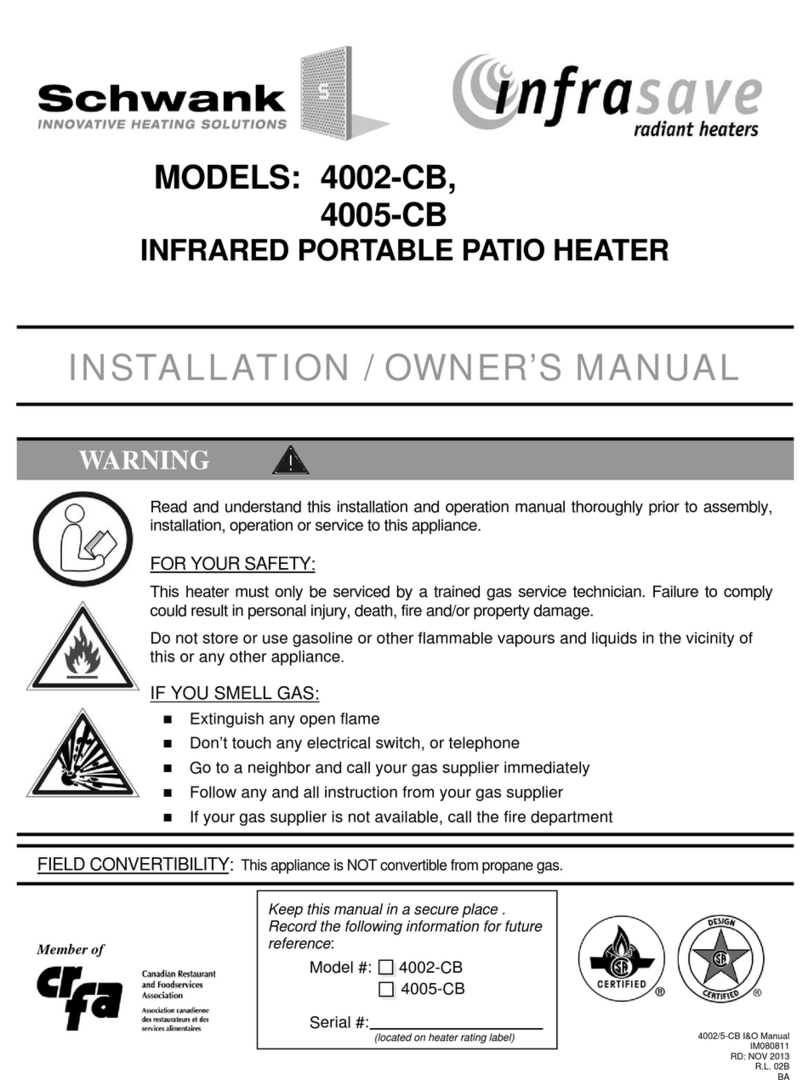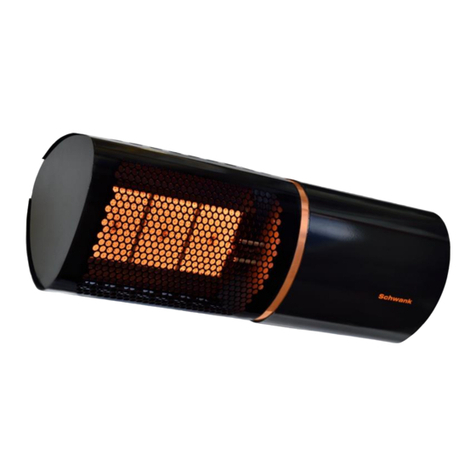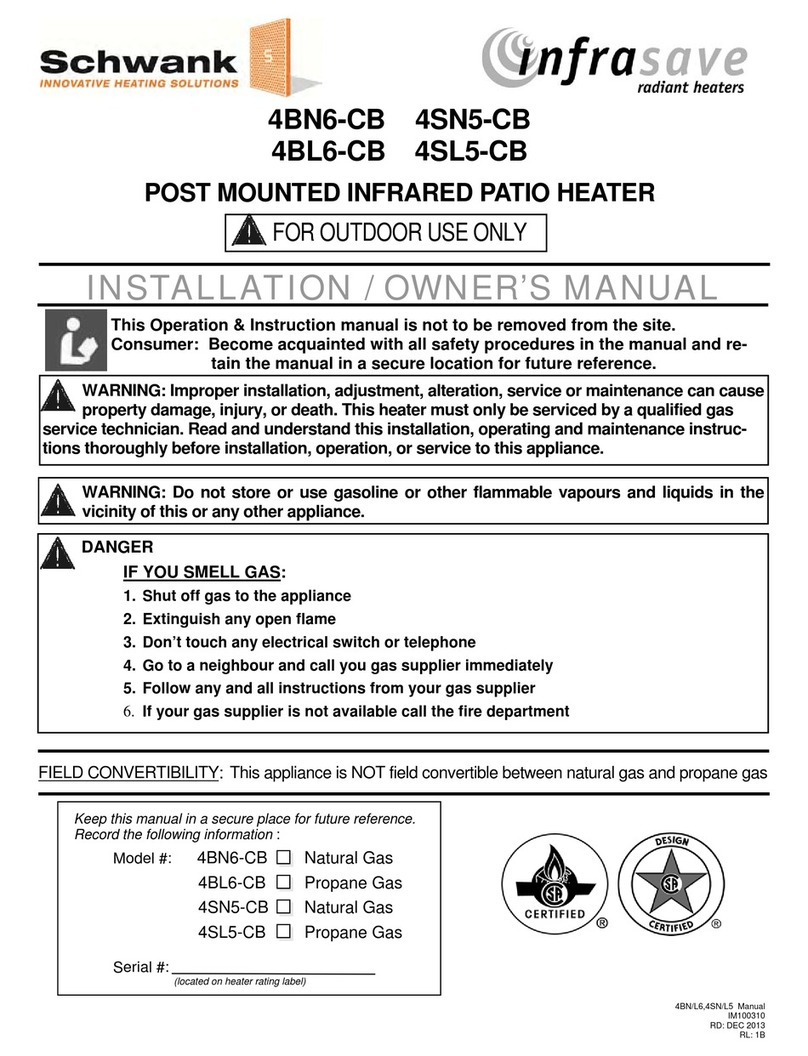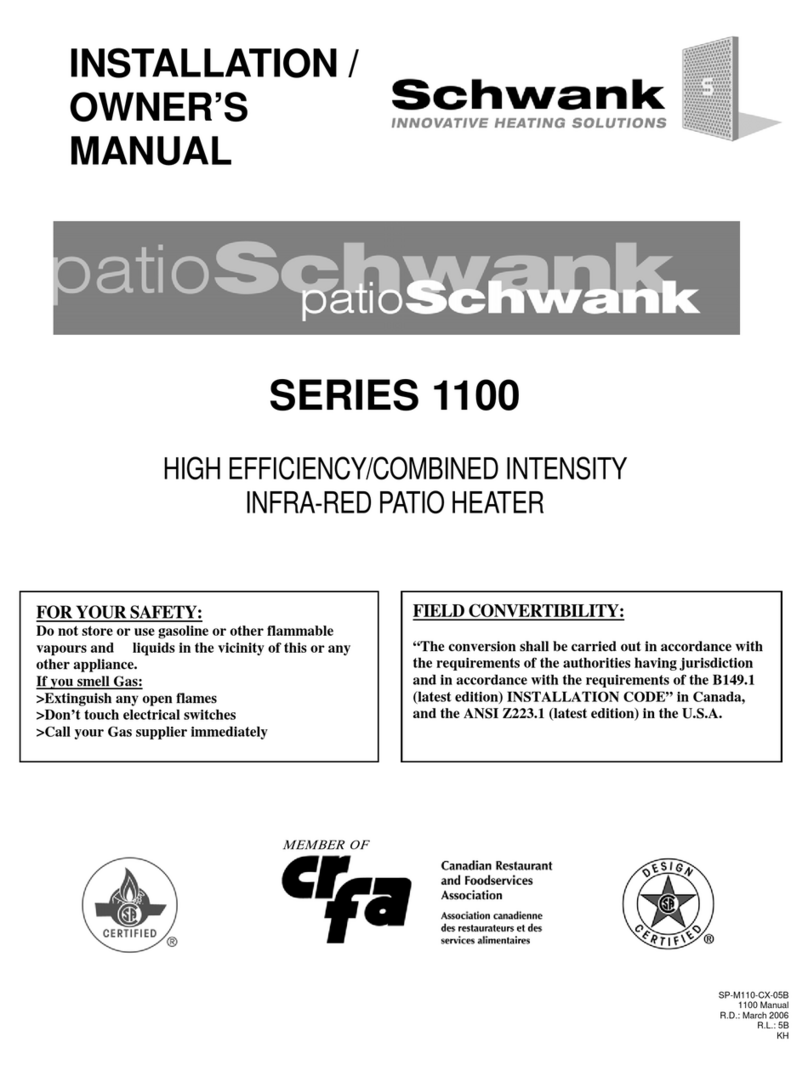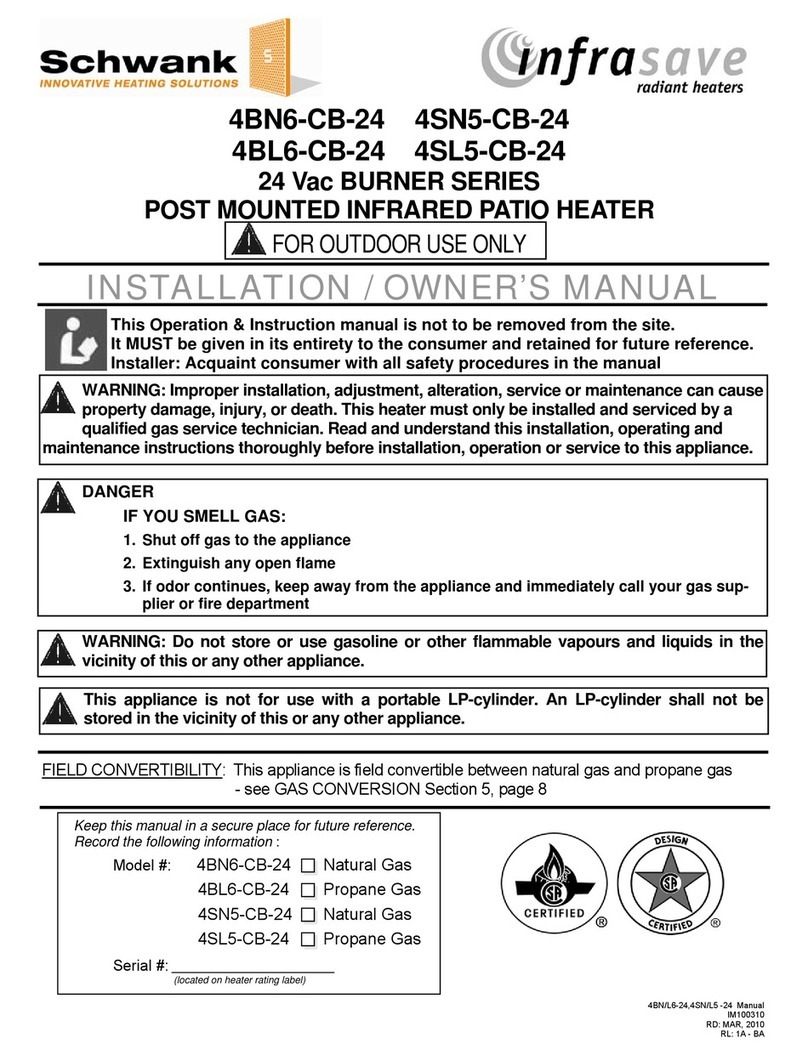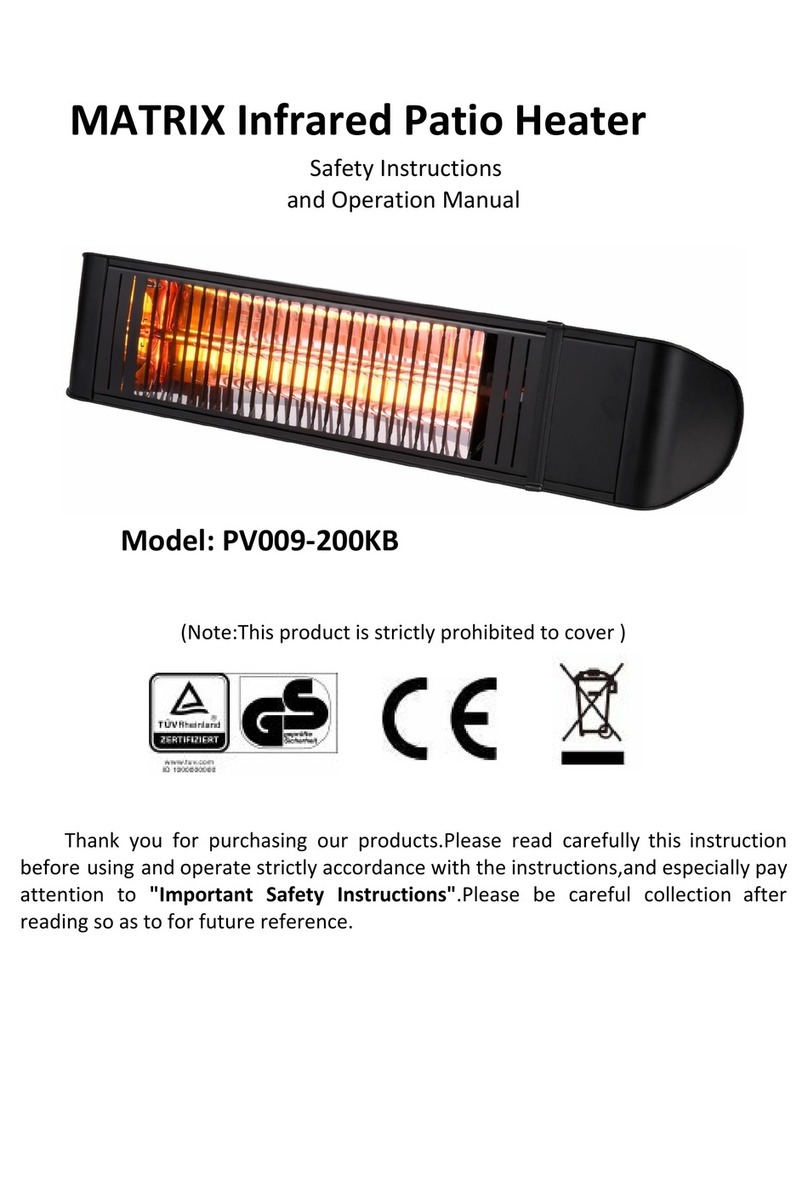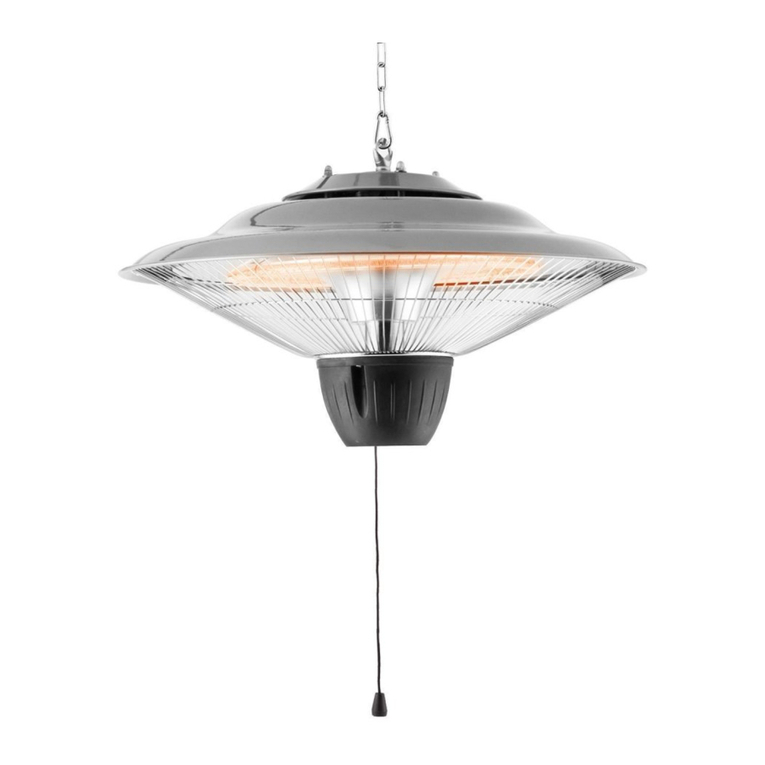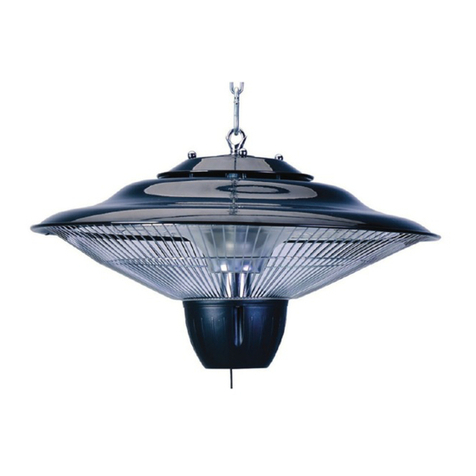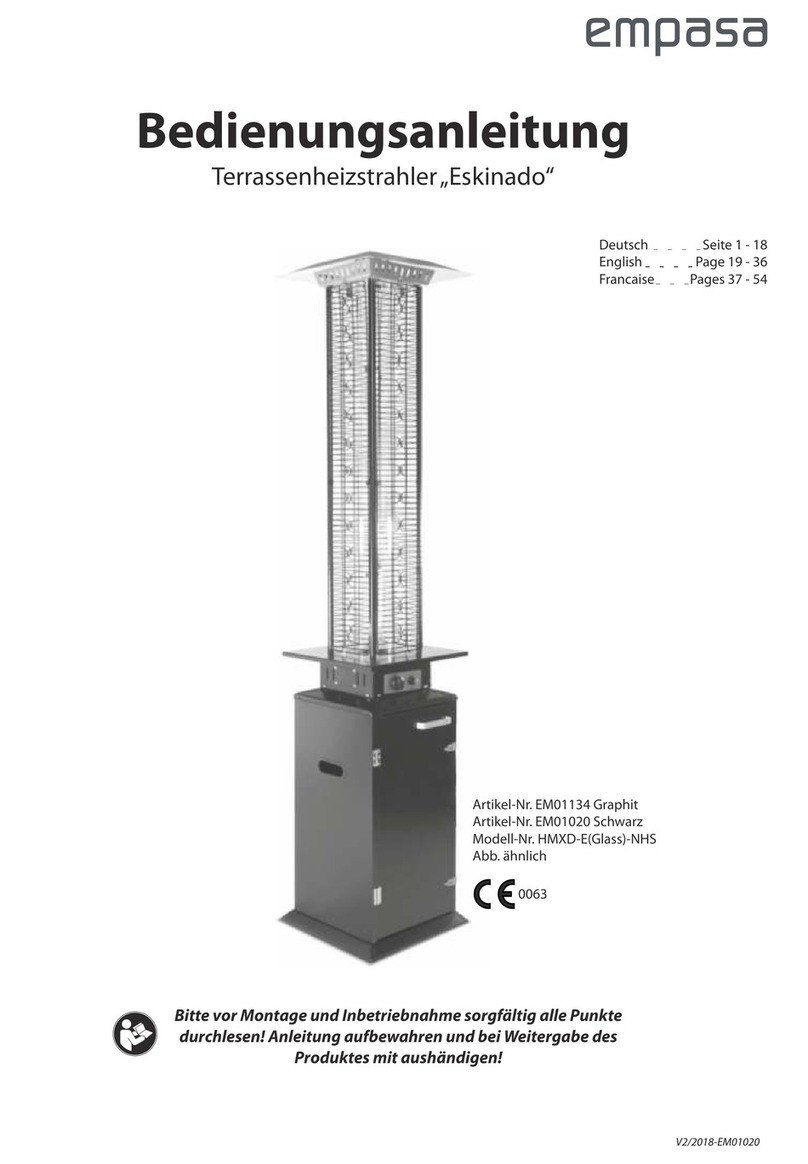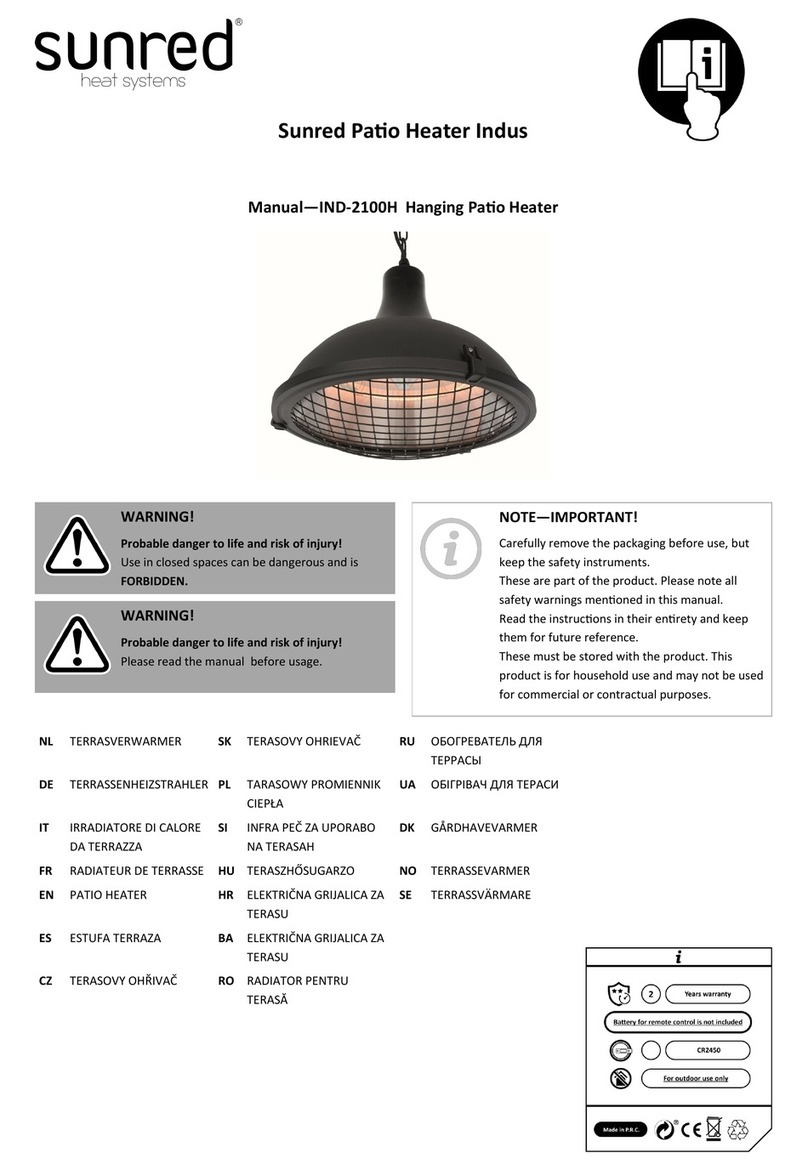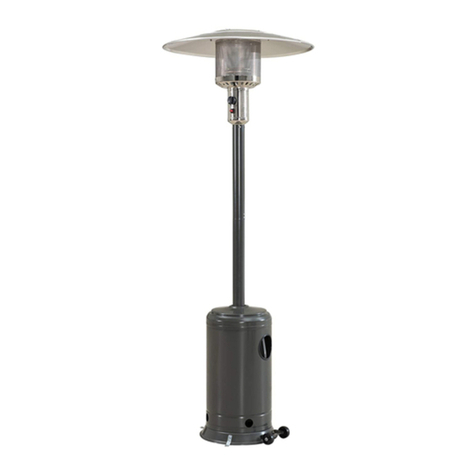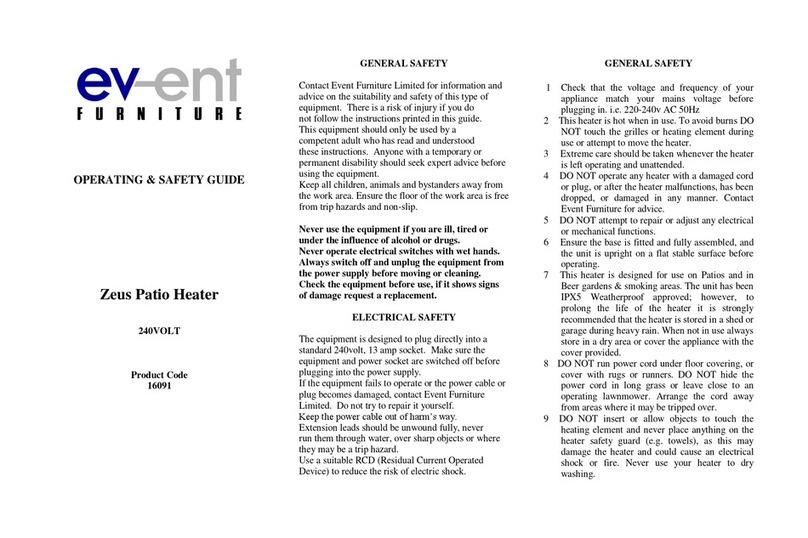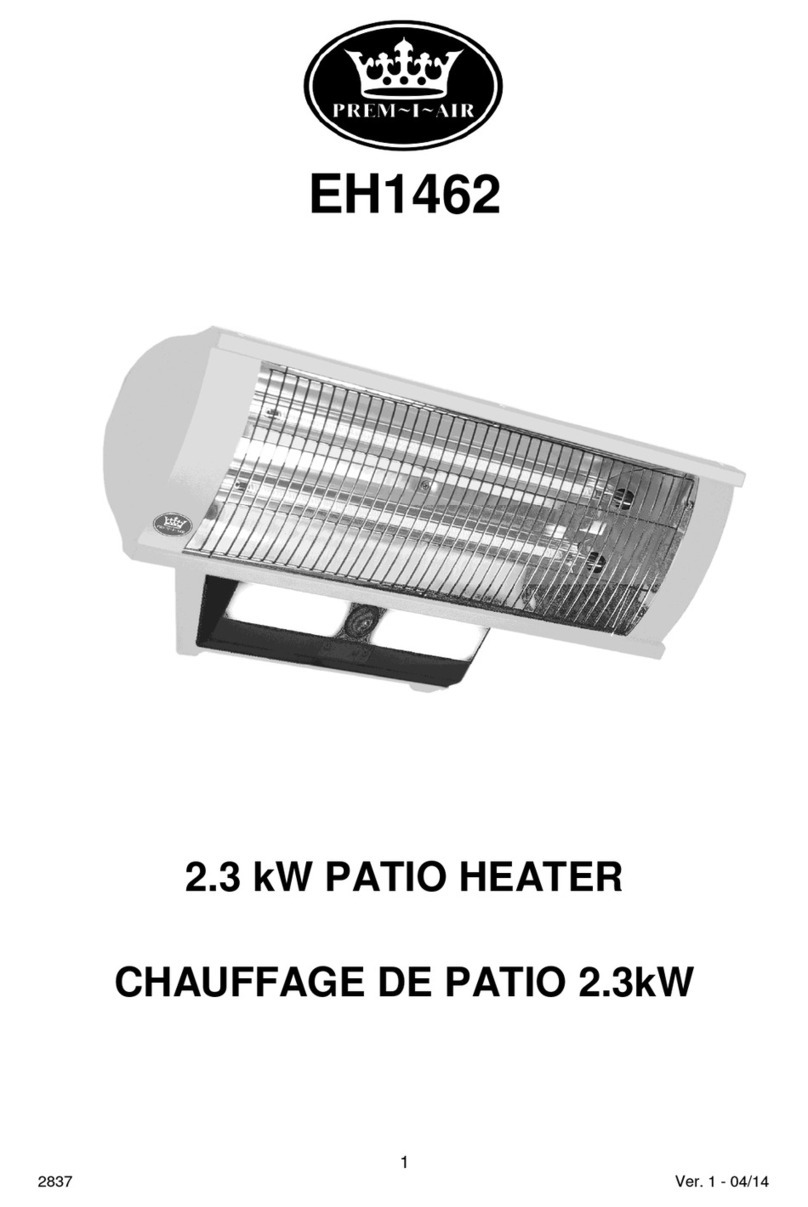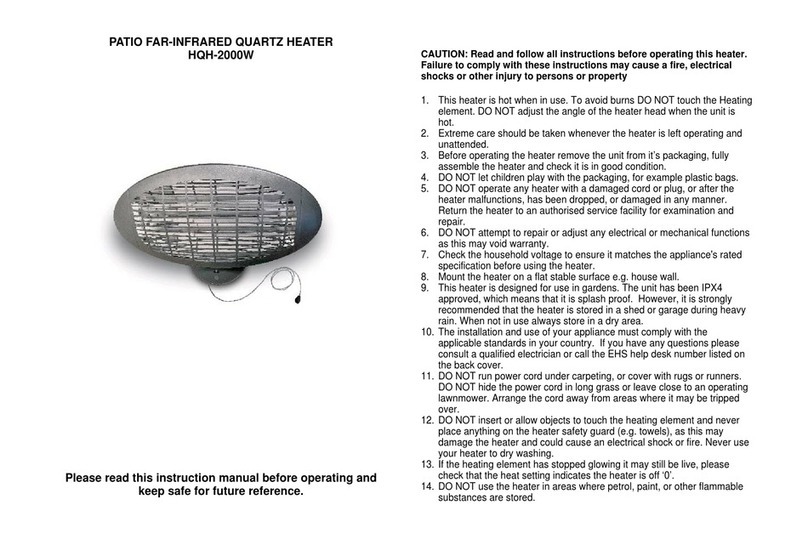
2100 / IO 100 Manual
IM310113
RD: APR 2013
R.L. 1D
BA
3
TABLE OF CONTENTS
TOPIC PAGE NUMBER
IMPORTANT INFORMATION - READ FIRST
IMPORTANT WARNINGS............................4
HEATER EXPANSION .................................5
GAS CONNECTION .....................................5
VENTING ................................................5, 13
‘SMOKE’ & DISCOLORATION....................5
CLEARANCE TO COMBUSTIBLES............6
Clearances Figure & Table........................7
MOUNTING LOCATIONS.............................8
1. APPLICATION....................................................9
OUTDOOR / PATIO.......................................9
INDOOR INSTALLATION...............................9
2. AIRCRAFT HANGARS.....................................10
3. GARAGES & PARKING STRUCTURES ..........10
4. OTHER THAN SPACE HEATING.....................10
5. PRE-INSTALLATION SURVEY........................10
6. INSTALLATION REQUIREMENTS...................11
6.1 MOUNTING CLEARANCES......................11
6.2 HEATER MOUNTING................................11
7. GAS SUPPLY PIPING......................................12
7.1 GAS PRESSURE.......................................12
Models 2100 / IO-100
Patio Heater for OutdoorApplication
and Gas-Fired Luminous (High Intensity) Infrared Heater
for Commercial / Industrial Non-Residential Indoor Spaces
TOPIC PAGE NUMBER
8. ELECTRICAL - BASIC REQUIREMENTS........12
9. INSTALLATION PROCEDURES......................13
10. LIGHTING INSTRUCTIONS.............................14
10.1 SHUT DOWN INSTRUCTIONS...............14
11. HEATER FINISH & APPEARANCE..................15
12. SERVICING GUIDE..........................................16
13. VENTILATION FOR INDOOR APP’S...............18
14. DIMENSIONS & CONFIGURATION.................18
15. MOUNTING KIT OPTIONS...............................18
16. ELECTRICAL REQUIREMENTS.......................23
16.1 REMOTE CONTROL OPTION..................23
17. SEQUENCE OF OPERATION-FENWAL 35-60
DSI.....................................................................23
18. SPARK IGNITION CIRCUIT .............................25
19. WIRING DIAGRAM............................................26
20. TROUBLESHOOTING GUIDE ..........................27
21. COMMISSIONING REPORT.............................29
22. HIGH ALTITUDE DERATION...........................31
23. REPLACEMENT PARTS LIST...........................32
24. LIMITED WARRANTY..........................Back Page
IMPORTANT Installer: Present this manual to the end user. Acquaint the end user
with Important Information: Cover & pages 4 to 7.
END USER: In particular you must be aware of ‘Clearances to Combustible’ requirements and the
limitations of stacking or placing material near the heaters.
Inform your safety personnel and staff of this information.
